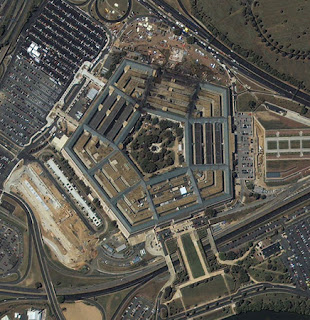We do not live in vacuums. We are emotional
individuals, who are shaped by our environments. Society is a human product.
This idea stems from the theory of social constructionism, which simply states
that,
- An individual’s conception of reality is socially constructed through a process of communication using shared language.
- Reality exists, but the way we come to know it, talk about it, understand it, is mediated through social life.
- The media play a large role in ‘constructing’ or ‘mediating’ the social world, as we understand it.
The media can have a tight grasp on ones
formation of reality. This ability of the media is known as agenda setting. Basically,
agenda setting is how the media constructs reality.
Definition of agenda setting:
“Agenda setting is the
process of the mass media presenting certain issues frequently and prominently
with the result that large segments of the public come to perceive those issues
as more important than others. Simply
put, the more coverage an issue receives, the more important it is to people.” (Coleman, McCombs, Shaw, Weaver, 2008)
The media
creates their own reality, and portrays this onto the public. As the media is
seen as a relatively credible source, it can alter the public perception of
reality, as seen below.
For the theory of agenda setting to be
accepted, one must understand two basic assumptions.
- Mass media inherently holds the ability to shape public perception.
- Specific media concentration on a few subjects leads the public to accept that they are more important than other subjects.
‘Agenda setting’ as a mass communication
theory lies its intellectual roots in the book Public Opinion by Walter
Lippmann. It was publish in 1922 presented
an insight into the role of media, which strives beyond its time. Lippmann, in
his book, discussed how the media paints “pictures in our heads”. For example,
when one thinks of the terrorist attack of September 11, there is one picture
in our heads.
Does anyone think
of the image of the Pentagon? I believe it’s almost the forgotten terrorist
attack. The media showed up the images of the Twin Towers, and now that creates
out reality.
Half a century later, Maxwell McCombs and Donald Shaw lead the major research dedicated to agenda setting. Setting The Agenda: The Mass Media and Public Opinion (McCombs, Shaw 1972) makes an important point about the theory of agenda setting. “Agenda setting is not the result of any diabolical plan by journalists to control the minds of the public, but an inadvertent by-product of the necessity to focus the news. Newspapers, magazines, radio and television have a limited amount of space and time, so only a fraction of the day’s news cam be included.”
McCombs and Shaw
conducted an experiment, to study the effect of agenda setting in the media.
The test occurred over the 1968 Presidential Campaign in Chapel Hill, North Carolina. McCombs and Shaw
surveyed 100 undecided voters on the key issues and measured that against media
content. Their hypothesis was that the mass media set the agenda by emphasising
specific topics.
They conducted the study under two theories
of the agenda setting theory.
First Level Agenda – concerned with the influence of the media on which objects are at
the center of public attention. Simply, it is concerned with ‘what the pictures
are about’, to speak through the voice of Walter Lippmann. This theory is the
one studied by researchers and scholars alike. At this level the media suggest what the public should focus on through
coverage.
Second Level Agenda – focuses on how people understand the things that have captured
their attention. This is essentially, how the media focuses on the attributes
of the issues. The media suggests how
people should think about an issue.
McCombs and Shaw came
to the conclusion, that “In choosing and displaying news, editors, newsroom
staff, and broadcasters play an important part in shaping political reality. Readers
learn not only about a given issue, but also how much importance to attach to
that issue from the amount of information in a news story and its position. In
reflecting what candidates are saying during a campaign, the mass media may
well determine the important issues – that is, the media may set the ‘agenda’
of the campaign.” The media holds all the cards. This strengthens the agenda
setting theory, as is has an explanatory, and predictive, and organising power.
Through the process of agenda setting, the
media can also perform a number of different tasks, including:
- Media Gatekeeping – how individuals control the flow of messages through a communication channel; the exposure of an issue.
- Media Advocacy – purposive promotion of an issue, i.e. smoking, organ donation.
- Agenda Cutting – the reality that most news isn’t represented, i.e. AIDS/HIV in Australia.
- Agenda Surfing – crowds and trends i.e. Kony. The media "surfs" on the wave of topics originally mentioned in the opinion-leading media.
- The diffusion of News - the process through which an important event is communicated to the public. How, where, when news is released. Who decides?
- Portrayal of an Issue - The way an issue is portrayed will often influence how it is perceived by the public.
- Media Dependence – the more we become dependent on the media, the greater ability we grant it to set the agenda.

.bmp)


No comments:
Post a Comment